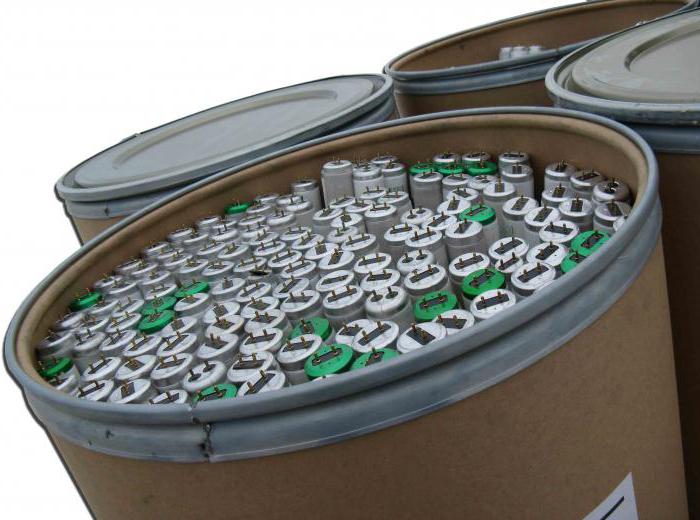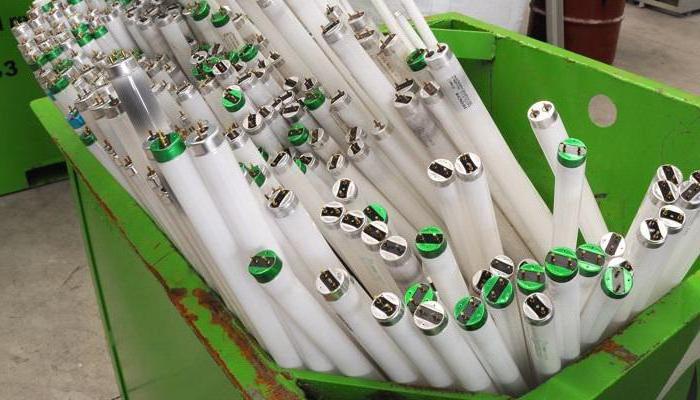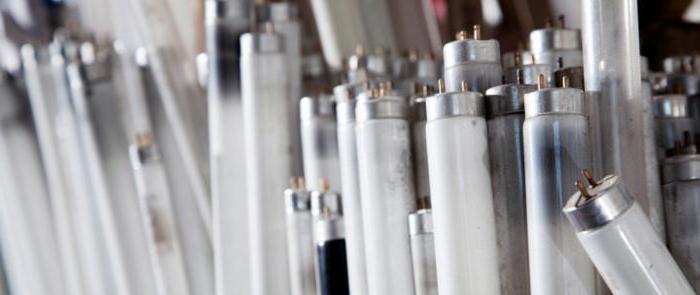The increasing consumption of fluorescent and energy-saving lamps has led to the problem of their disposal and recycling after service life, because these lighting devices contain a number of substances that are especially dangerous for the environment and humans. For this reason, there are certain provisions for the collection and disposal of waste appliances that must be observed in order to protect nature and people from the effects of toxic components.
Collection and disposal of fluorescent lamps
In no case should you break, disassemble, or generally violate the integrity of the inner glass shell of both waste and working mercury lamps. Failed products are strictly prohibited to throw in landfills, in garbage containers and garbage chutes. Fluorescent lamps, the disposal of which is best carried out using special containers, are stored in them immediately after running out of life. These collection containers are equipped with a technological hole on the lid or case, which automatically closes tightly after loading.
To ensure the safety of this process, the container body is made of a special alloy of glass or alloy steel and is completely tight. In addition, each collection point should have containers not only for whole lamps, but also for damaged ones, as well as a demercurization kit for the possibility of eliminating mercury pollution that has arisen. The latter should be accompanied by detailed instructions agreed with Rospotrebnadzor.
In order to properly collect, store and transfer fluorescent lamps for recycling, their disposal is regulated by Law No. 187 (Article 39) of the Russian Federation, according to which it is forbidden to install containers intended for this purpose in the wrong places, to independently organize the removal of potentially hazardous waste from the storage area, to which include mercury lamps, and dispose of them using prohibited methods. This law provides for the payment of fines for violation of the indicated conditions.
Removal and disposal of fluorescent lamps
Transportation must be carried out according to strict rules. Carefully pack used lamps. For these purposes, most often a dense polyvinyl chloride film is used, which resembles the protective shell of household appliances. She needs to wrap the lamps so that a vacuum is formed. In this way, possible evaporation of mercury from the phosphor contained in the lamps can be prevented. To ensure the transportation process is as safe as possible, it is also necessary to maintain a low temperature of waste products.

There are companies that use large quantities of fluorescent lamps in production. Disposal and transportation in these cases is carried out with the participation of specialized enterprises with which they conclude an agreement. The process of organizing disposal should take place under the control of special inspection services of local authorities.
What harm can damaged mercury lamps do?
Phosphor is a powdered component found in a fluorescent lamp that contains approximately 2-7 mg of mercury. And this is only in a compact lamp. And its maximum permissible concentration (MPC) in the air of residential areas is only 0.0003 mg / m3. Thus, one lamp is capable of poisoning several tens of thousands of cubic meters of air. Utilization of fluorescent lamps makes up less than 40% of the 70 million units accumulated in Russia annually. This amount is enough to poison many hectares of land and cubic meters of air.

The harm of mercury vapor has long been known.This potent toxic poison, entering through the respiratory tract into the body, affects nerve cells, internal organs (liver, kidneys, heart, gastrointestinal tract, and so on), and causes serious illnesses, including cancer. Mercury vapors have a particularly negative effect on children with weak immunity.
Why is the use of fluorescent lamps increasing
As for efficiency, there is no alternative to mercury light sources, since they have exceptional performance indicators: they generate a luminous flux of up to 100 lm / W, while their operating temperature is low and their service life reaches 40 thousand hours. For comparison: incandescent lamps have dozens of times smaller parameters, and gas-discharge mercury-free products produce half as much as the visible light flux. For this reason, they are also called energy-efficient.

Given the fact that energy prices are rising all over the world, a gradual transition to the introduction of mercury lighting elements instead of incandescent lamps is provided for reducing the energy intensity of production. To this end, Federal Law No. 261-F3 of November 23, 2009 was adopted.
What if the lamp crashes?
In case of damage to the lamp in the room, it is necessary to collect completely all the smallest fragments and place them in a portable sealed container. As soon as possible, you need to organize the ventilation of the room and try to lower the temperature. The collection of broken fragments must be carried out with gloves, a protective mask and overalls. Broken fluorescent lamps, the disposal of which must be carried out in compliance with strict safety measures, must be taken out of the room to the place of processing as soon as possible.

In no case should you use a vacuum cleaner, since mercury-containing dust will spread throughout the area. Instead, you need to use a tape with a sticky side, which you need to wipe places with particles of a crashed lamp. When everything is collected, it is necessary to find out from the local authorities where the disposal of fluorescent lamps is carried out. After this, it is necessary to call specialists from the sanitary and epidemiological station who will measure the content of harmful substances in the room air.
The benefits of processing
All components are suitable for further use. Glass is used again for the manufacture of lamps, end caps are processed into brass and aluminum, which are suitable for the manufacture of microcircuit parts, pigments for paints and varnishes are produced from the inner coating, mercury is reused in energy-saving lighting devices. Disposal of spent fluorescent lamps consists in the process of restoring their spent components and manufacturing new products.
Unfortunately, the system for collecting fluorescent elements has not yet been established, and the population, which is the main consumer (70%) of compact energy-saving lamps, throws out failed devices into garbage chutes and landfills, thereby polluting the environment with mercury.



